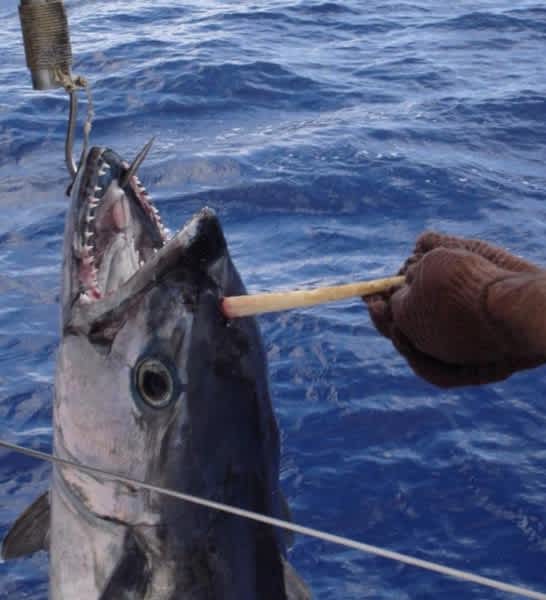Did This Australian Angler Catch a “Tunicorn?”
OutdoorHub Reporters 10.30.14

Does something like as a “tunicorn” exist? The is the question that Australian angler Kim Haskell, 64, is asking after he helped to land a dogtooth tuna with what appeared to be a horn on its head. The 80-pound fish was caught earlier this month in the Coral Sea just off the Queensland coast during a fishing trip with Kim’s brother Jamie Haskel and his nephew. The two brothers sent a photo of the strange fish to ABC Tales from the Tinny and called it the strangest thing they’d ever seen. Social media quickly flocked to the photo, and curious anglers began referring to the fish as the mythical “tunicorn.”
However, there is a more logical explanation for why this fish was sporting some rather unusual headware. Upon closer inspection, the Haskell brothers determined that the “horn” may actually have come from another animal entirely.
“Here is a Dog Tooth Tuna [sic] caught on the outer reef just out of Cooktown Queensland with marlin spike embedded in it’s head,” wrote Jamie Haskell to ABC. “It was totally healed so must have been in it for a while. We were wondering if the spike entered through the mouth because the thin bit was at the end. Looked almost too perfectly centered and would not have believed it if we hadn’t caught it ourselves?”
The Haskells believe that the spike had gotten lodged in the fish from a previous marlin or sailfish attack, an event that seems to have ended badly for both parties.
“It looked to me like the only way it could have gotten there is that there was a feeding frenzy,” Kim Haskell told the Daily Mail. “My guess is there was a bait ball, and the sailfish must have speared the tuna by mistake, and the bill snapped off.”
What was astounding was how deep the spike penetrated without doing any major damage to the tuna. The anglers brought the fish aboard their boat and removed the bill, yet the area around the spike was already fully healed. The anglers could hardly guess how long the “horn” was embedded in the tuna, but it may have been years.
“It’s incredible that the bill missed major blood vessels and brain tissue and that the tuna was still able to operate,” Kim Haskell said.
Unfortunately, all their efforts were for naught. Shortly after the fish was revived and released, the anglers saw it being attacked and consumed by sharks. Predatory attacks by sharks are always a risk for saltwater anglers, but the Haskells said they did everything right to minimize the chances of that happening, and that the tuna was healthy and relatively unbloodied when they released it. Alas, it did not seem to be its lucky day.

